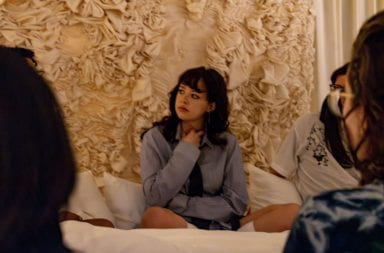
The Wexner Center for the Arts will be celebrating its 30-year anniversary this November. Credit: Taylor Smith | Lantern Reporter
When the Wexner Center for the Arts opened in November 1989, it was the only cultural institution of its kind affiliated with a major research university, representing a public venue for contemporary art in all forms, according to its website. Three decades later, its significance has only grown, becoming a staple of Ohio State’s campus.
The Wexner Center celebrates the 30th anniversary of its opening this November. Les Wexner, chairman and founder of the Wexner Center and Ohio State alumnus, worked with the university throughout the 1980s to spark its creation, culminating in the center’s opening in 1989, Melissa Starker, public relations manager for the Wexner Center, said.
“The original intent was to create a space that could not only present world class art — visual, performing, film — and create engaging programs that would not only be a resource for Ohio State, but it would build a bridge between the campus and the greater Columbus community,” Starker said.
The Wexner Center has attracted acclaimed artists over the years, such as Cindy Sherman, Annie Leibovitz and John Waters, Starker said.
Of the landmark events that have occurred at the Wexner Center, Starker said an onstage conversation between director Martin Scorsese and film critic Roger Ebert in 1997, when Scorsese received the Wexner Prize, is one frequently mentioned.
“It’s kind of like in the local music scene there’s a, ‘I saw Nirvana at this tiny little club in North Campus in the early ’90s.’ The Scorsese event is sort of the film equivalent to that in Columbus,” Starker said.
Starker said the 30-year-old Wexner Center hasn’t undergone much change over the decades other than some small-scale expansion and broadening the number of programs presented each year.
Chris Stults, associate curator of film/video who has worked at the Wexner Center for 17 years, said both Columbus, Ohio, and the art world have evolved drastically since the beginning of his tenure.
“One of the exciting things about being at a contemporary arts center is how you reflect change with your programming,” Stults said. “Part of our job as the programming team here is to remain open and curious and engaged with the interests in the community and the culture and to stay plugged into that.”
Starker said the Wexner Center has been a useful resource to Ohio State, bringing in visiting artists and filmmakers to engage with students, and is a learning center at heart.
“We’re really just creating opportunities for students to see really amazing things and to hear from really relevant people across disciplines to sort of expand what they would get in a classroom situation,” Starker said.
The center’s impact has been broader than Ohio State’s campus, however. Starker said there’s been a notable influence on the city of Columbus as well.
“Aside from the great variety of programming that people can experience here, the Wex has helped Columbus recognize and establish its identity as a home to art and artists,” Starker said. “I feel like we’ve made a good impression, and it’s impacted the arts community as a whole.”
While the anniversary of the Wexner Center’s opening provides an opportunity to reflect on its history, it also allows people to look toward the future.
Perhaps the biggest change to the Wexner Center occurred in March, when Johanna Burton took over as director, a role previously held by Sherri Geldin for 25 years. Starker said Burton has the perfect background for the job due to her past in curation and academia.
“Just watching her get acclimated to the Wex and get familiar with all that we’re doing, it’s really exciting to see the ideas that she’s coming up with in terms of how we can make our connections to the university even stronger and how we can make connections with the arts leaders in the city even stronger,” Starker said.
While future plans for the Wexner Center aren’t entirely clear due to the ever-changing contemporary art scene, Stults said it’s an exciting thought to ponder.
“I don’t really know in five years or 10 years what things will look like because culture and art is changing so much,” Stults said. “It’s not even things we’re guiding ourselves, it’s more responding to where the world is going.”
As the art world changes, so does the Wexner Center’s audience, Starker said. Its impact, however, remains constant.
“The fact that every year we get a new crop of students, that gives us new life every year. I see good things ahead,” Starker said.


